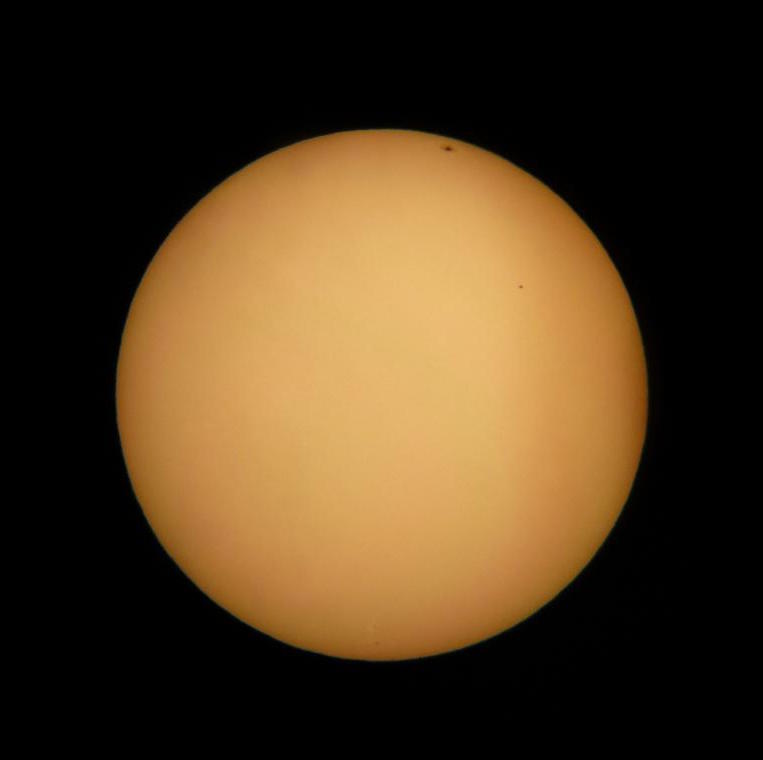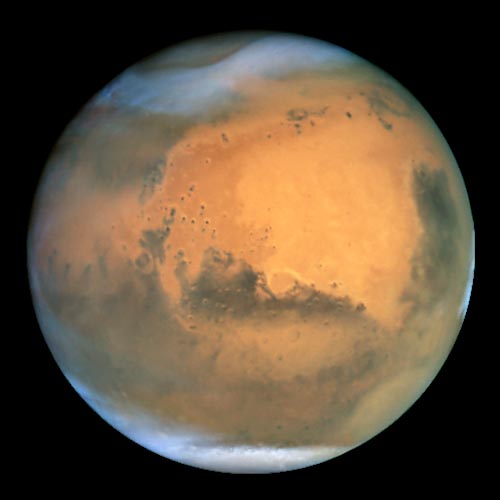Mercury and Mars in May Inspire article
The month of May brings with it two different planetary wonders, allowing us to recreate calculations first made 300 years ago

2006.
Image courtesy of Mark
VandeWettering; image source:
Flickr
The transit of Mercury and the opposition of Mars are two celestial events occurring this month. Why not use this opportunity to bring together mathematics and physics in the classroom?
Transit of Mercury
On Monday 9th May you will be able see a small black dot slowly moving across the Sun – that dot is the planet Mercury. Although Mercury passes between the Earth and Sun at least three times per year, exact alignment is rare, with an average of thirteen transits occurring every century.
To mark the event the European Space Agency (ESA) have launched a “Transit of Mercury Schools Challenge”. Students are challenged to recreate a historical experiment and collaborate with other European schools to calculate the distance between the Earth and the Sun. To do this they need to measure when the edge of the disc of mercury makes contact with the edge of the Sun and send their findings to ESA who will then share the data they receive. By using data from schools at different locations students should be able to calculate the distance from the Earth to the Sun.

2001, when Mars was
approximately 68 million km
from Earth.
Image courtesy of
Hubble Heritage; image source:
Flickr
Opposition of Mars
Another planetary alignment is the opposition of Mars, which means that Mars will appear much brighter in the sky between now and Sunday 22nd May. Opposition means that Mars and the Sun are on directly opposite sides of Earth. On Sunday 22nd May Mars will be at its closest possible distance to Earth and the size and brightness of Mars will be increased, making this the perfect opportunity to observe Mars.
In issue 35 we published an activity from the Parallax Network of schools to measure the distance from the Earth to the Moon. That network will be using the opposition of Mars to repeat the experiment to measure the Earth’s distance from the red planet. The only specific material necessary is a good camera to take photos of Mars and the sky. Students can then use the images to calculate the distance.
